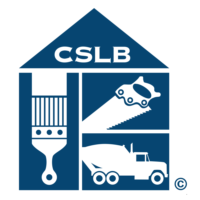Some things are rotting in the state of California.
About two weeks after a June 16 balcony collapse in Berkeley, Calif., killed six people and injured seven, a 26-year-old man was killed when an exterior, second story stairway collapsed July 3 at an apartment complex in the city of Folsom, about 100 miles northeast of Berkeley. In both cases, dry rot in the wood framing is the suspected cause.
Related Links:
Deadly Berkeley Balcony Collapse Prompts Code Changes
Man Killed in Folsom Stair Collapse
"The best we could find out is that it was rotted wood," says Steve Burger, Folsom chief building official. "They had lag screws supporting the stairway and apparently water got in there and caused wood rot and the screws gave out."
Burger, who studied the scene with his in-house structural engineers, said after examining the stairway that he instructed the property owner to check all other stairways at the 11-building complex and shore up any that were in need of support and block any that were too dangerous to use.
Burger says the property owner, Gerson Bakar and Associates, and its structural consultant, San Francisco-based Simpson Gumpertz & Heger, are planning to repair or replace all 32 staircases at The Legends at Willow Creek apartments.
In a report obtained from the city, ENR learned that the 280-unit complex, which was built in 1999, was issued permits in 2014 and 2015 to repair dry rot on stairways, including the one that failed on July 3. The city also issued another permit on June 16, 2015 for landing repairs on the building with the failed stairway, but no work was performed before the deadly collapse.
Since the accident, the owner submitted new plans to the city for review. This new design features an assembly that uses a through-bolt attachment technique with internal caulking that "would not fail in the same manner." The assembly also includes techniques designed to prevent water intrusion and wood decay—such as rot resistant, pressure treated beams, flashing and waterproof membranes.
The city says the attaching and sealing techniques specified in the design plans meet building code standards, and the building owner has committed to reopen and revaluate previously completed repair work. The city says it will examine the submitted plans for code compliance and inspect the construction (including re-inspecting previous completed work to reopened) to ensure that it is completed according to design plans.
When asked if the city is planning any Berkeley-type changes to building codes, Burger says the city wants to be careful of "a knee-jerk reaction" in enacting new ordinances.
“But maybe in the future these are things we may look at, and maybe we will require some special inspections similar to Berkeley,” he added.


